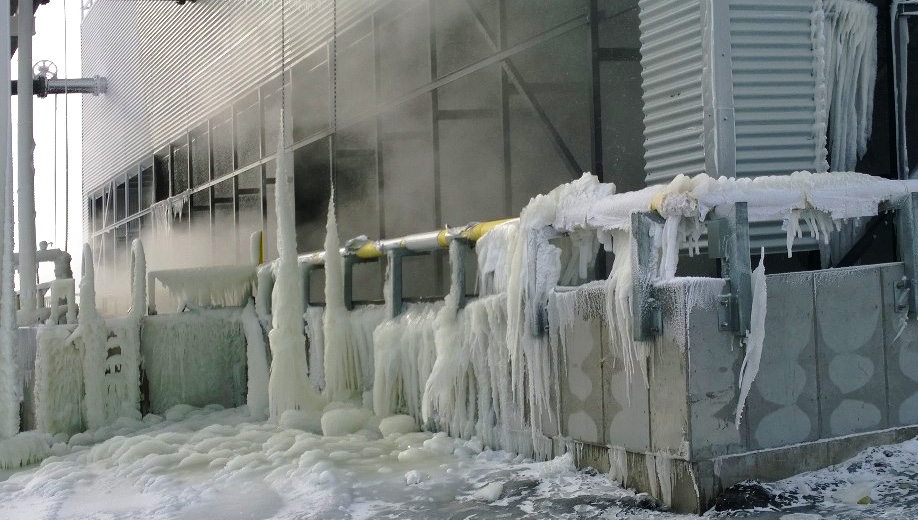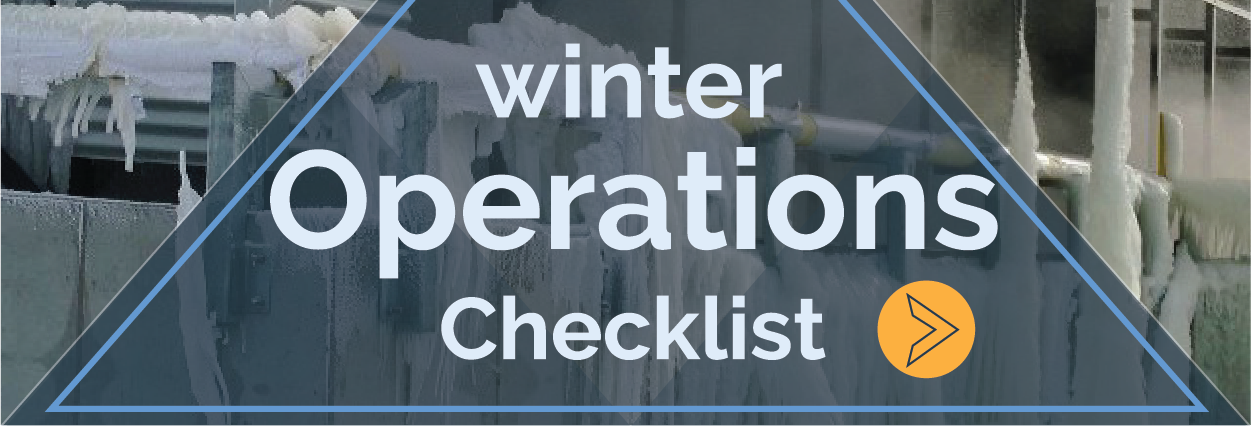
** The following is a combination of professional advice by Cooling Tower Depot, Inc. and CTI (the Cooling Technology Institute) for your cooling tower winter operations.
The Farmer's Almanac has released their predictions for the 2015-2016 winter season. If their formula for the upcoming winter is accurate, then just about anywhere east of the Mississippi is projected for a head on collision with Mother Nature. Despite where you live and work you must be prepared to operate your cooling tower under expected or unexpected winter conditions.
The first rule in preparing for Cooling Tower Winter Operations is, don't kid yourself. Winter is going to be very, very cold again this year. Let's accept the fact that we will be wearing ten layers of clothing, thus we can begin to prepare for it.
As we accept our fate, we recommend that a fall inspection of your cooling tower takes place. A fall inspection will help to identify any broken or clogged distribution headers, laterals and nozzles. This is important because if any of these are broken or clogged the water flow rate will be too low, thus causing localized ice buildup in areas of your tower and creating further damage.
If you have a COOLING TOWER DEPOT, INC. counterflow cooling tower you are in luck as we have specifically designed our towers to reduce icing problems during cold weather operation. For any cooling tower brand, cold weather operation should be taken into effect when the water temperatures fall below 55 degrees Fahrenheit. The first step in conducting winter operations is to protect the air inlet opening or louver area if installed. This is the only area in direct contact with entering air. The most effective way to protect the air inlet opening on any brand of cooling tower is to install tarpaulins on the windward side of the tower. Within a DEPOT brand tower, all other components are protected as long as the tower is supplied with substantial operating heat load.
Plant heat load should be maintained at the highest possible level. In addition, circulating water flow should also be maintained at the highest possible rate by operating all usable pumps. This is to ensure a full warm water wash of the internal components. It is important that distribution headers, laterals and nozzles are clean and intact to provide even water distribution over tower fill to help prevent icing. If no heat load is available, the circulating water should be bypassed directly to the cold water basin. If your tower is not equipped with a bypass capability then shut down your tower completely. See our Winter Shutdown Checklist to ensure a proper tower shutdown during winter.
While running your tower under winter operations, a visual inspection of the tower should be completed every 4 hours as long as the ambient temperature is in the rage of 20 - 40 degrees Fahrenheit. If the air temperature falls below 20 degrees it is recommended that a visual inspection be completed every 2 hours. Additionally, the cold return water temperature should also be monitored periodically and should NOT drop below 55 degrees Fahrenheit.
The most effective way to maintain cold water temperature to help control ice formation, is to regulate air flow. To regulate air flow fans can be cycled from full speed to half speed or be completely turned off. More specifically, if you have a two speed motor you can cycle from full speed to half speed or off as required. Variable frequency drives or hydraulic fan drives can complete the same full, half, or off cycles as a two speed but with greater flexibility. However, with multi-cell towers fan speed cycles should be alternated between cells. For example, if one cell is continuously running at full speed while the others are running at half speed or are off, the cell running at full speed is at high risk of ice formation and damage.
If your airflow regulations are not effectively preventing ice buildup, switch to reverse fan operations. Reverse mode should be monitored continuously and should only be used for severe ice buildup and with systems that are capable of this option. This option will help drive warmer air out through the louvers and melt any ice buildup. Be sure to familiarize yourself with the documentation provided by the motor starter and controls vendor for further information. As you shut the fans off from rotating in normal direction, allow at least 2 minutes before starting the reverse option. Additionally at this time, check your fan blades for any ice buildup. If your fan blades are free from ice buildup you can now begin reverse direction even if the fans are still wind milling in the forward direction. There will be very minimal torque applied to the mechanical system.
Only operate fans in reverse direction for a maximum of 20 -30 min. Realize that because the air flow is reversed there will be splash out through the air inlet or louver area of the tower. Once the reverse fan operation is complete, let the fan come to a complete stop before re-starting. Now with the fans shut off, flow water for 15 min to prevent ice buildup in the plenum area. Again, visually check the fan blades for ice buildup before starting back up in the normal or forward direction.
Lastly, any ice buildup on the perimeter columns or the bottom of the fill should be frequently monitored. If ice buildup becomes excessive, begin the shutdown procedure. Do not in any case try to physically remove or strip the framework of ice. Remember: melting will leave components in good condition where as physical removal of ice will generally cause more damage.

Want to receive more industry tips? Become a CTD community member